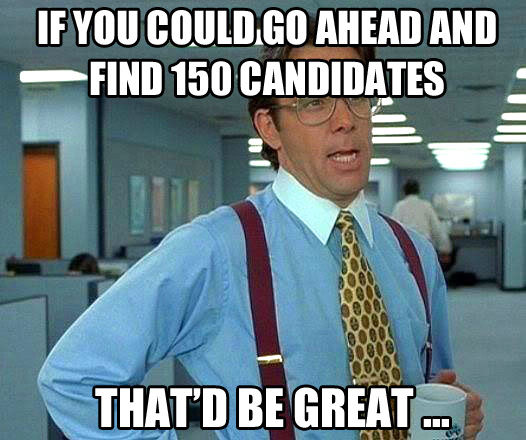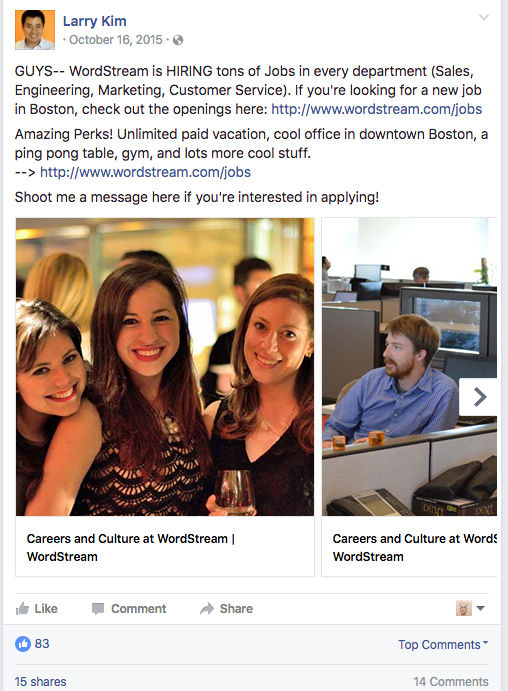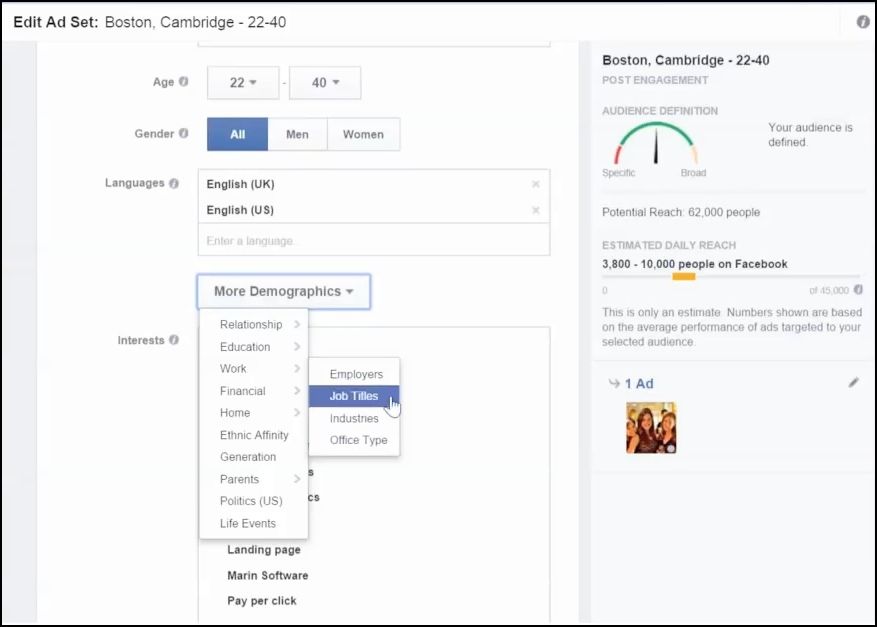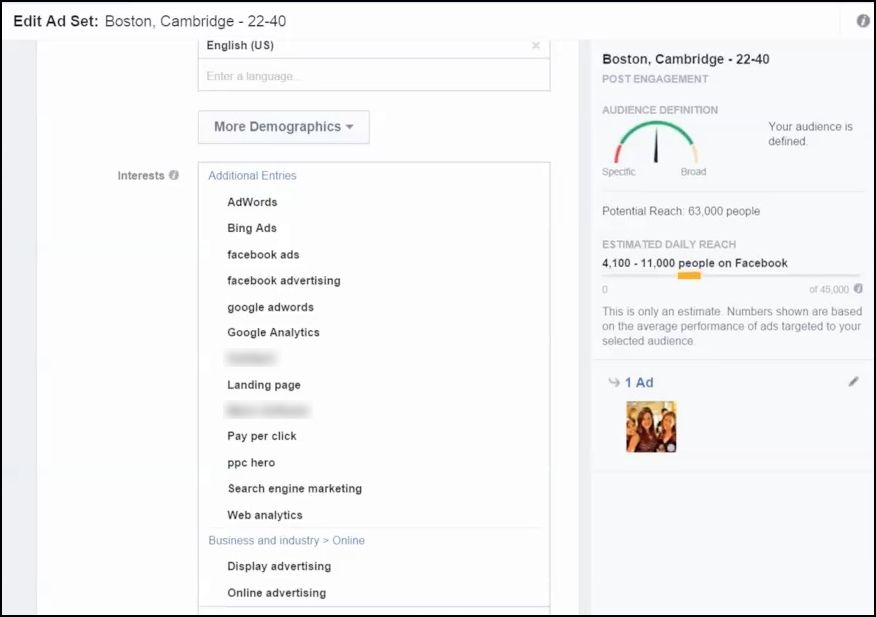How to use Facebook Ads to find and recruit new employees
How are you recruiting new employees?
How are you recruiting new employees?
How are you recruiting new employees?
Are you using job recruiters? If so, you know their finder fees are ridiculously high. Typically it will cost you 20% of your new employee’s first year salary.
Isn’t there a cheaper route? Why can’t we just find employees through social media?
When you think recruiting and social media, most people think of LinkedIn. Many companies believe this myth that you have to do all your recruiting on LinkedIn.
Honestly, LinkedIn is a site most people use only when they’re out of work and searching for a new job. So your search for employees on LinkedIn will actually end up excluding people who aren’t actively job-hunting.
Often the best employees already have jobs. Some of the greatest employees we’ve hired actually weren’t even looking to change jobs!

Facebook is the platform where everyone spends the most time. More than a billion people log into Facebook every day.
You can encourage your employees to share job openings on their Facebook page. But this won’t accomplish much. Your organic reach on Facebook is limited to friends of your employees.
You need people who live near your office. You need people with certain skills.
The number of people who are actually qualified for any open job is low. It’s highly unlikely that your current employees will be connected with someone who is absolutely perfect for the job – and even if they are, that person could easily miss it in their news feed.
If you’re serious about adding top talent to your team (fast), you need to reach a bigger audience on Facebook. You need to use Facebook Ads.
Any great Facebook Ad needs great visuals. So my biggest goal was to make WordStream look cool to future employees.
I took some photos during a company party to help highlight our culture and show off a few of our people. In the ad copy, I said that WordStream was hiring for all departments, listed a few of our amazing perks, told people to message me if they were interested, and linked to our job page.
And then I posted it to my wall and boosted it with Facebook Ads:

This is where the ad targeting comes in. People who have heard of you may not realize they’re in your key demographic and that you’re hiring.
Facebook’s ad targeting is mind-blowing. You just have to know exactly who you’re looking for when you’re recruiting for new team members.
For most companies, location is critical. So you can do geographic targeting within a few miles of your office:

Demographics are another critical element of Facebook ad targeting.
What age group are you targeting? If you want someone who is entry-level, you’ll want to target a younger crowd (early to mid-20s).
In addition, you can target your ads so they show based on a Facebook user’s employer, job title, industry, and office type:

Want someone with a certain educational background? You can add education-level targeting.
Interests are another important aspect of Facebook ad targeting. You can target your recruitment ad to people who have certain interests.
For example, I targeted my ads to people who were interested in stuff like C++ programming, inbound marketing, and PPC, because people who are interested in these things would also be interested in finding and applying for a great new job that aligns with their passions.

You can even use remarketing to reach people who have visited your site before and are already familiar with your brand.
After all the targeting options for the ad I created, I narrowed down my market, and it was actually quite large (almost 40,000 people reached) plus super relevant.
First off, check out the relevance score on this ad: a 7 out of 10.

The relevance score shows you how well your audience responds to your ad.
Engagement on this ad was awesome:
This is pretty incredible engagement for a recruitment ad!
On Facebook, engagement is the key. The higher your engagement, the higher your rewards from Facebook.
This is why you need to know exactly who you want to hire. Targeting your audience based on the demographics, interests, and behaviors that fit your open position will result in more relevant ads and higher engagement.
Had I simply targeted this same post to anyone with a Facebook account, the results would have been far less impressive. The engagement rate would be lower and the costs would be higher.
That’s because the higher your relevancy score, the lower your cost per engagement will be.
In addition to winning big with our new hire, Justin, the same Facebook ad attracted interest (and about 20 resumes) from several other good applicants.
Ultimately it was actually much cheaper in our case to have found our talented hire through Facebook rather than using a recruiter or LinkedIn ads. So next time you’re looking to fill a role in your company, give Facebook Ads a try.
Facebook ads + $200 and great targeting = awesome hires!
This article was originally published on the WordStream blog, it’s reprinted with permission: How to use Facebook Ads to recruit top talent.